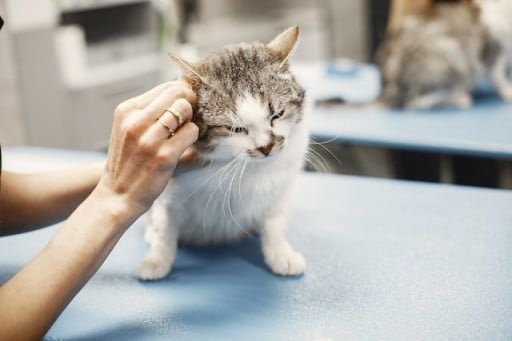If your cat receives an internal parasite diagnosis from the vet, the identified parasite is highly likely to be roundworms. That’s because roundworms are the most common worms in cats.
The worst part about a roundworm diagnosis is that these parasites consume the nutrients your cat gets from food. The consequences are poor growth and proneness to other related health risks. All that makes roundworms in cats bad news.
This article has all the info about roundworms in cats. Since knowledge is power, the article will equip you with all the information you require to counter cat roundworm infection. Let’s start with a brief description of roundworms.
What are Roundworms?

If you’ve seen how spaghetti strands look after they are boiled and drained, you know what roundworms look like.
Roundworms are long, roundworms measuring around 3 to 6 inches (8 to 15 cm). Outside the cat’s intestines, roundworms are easy to spot with the naked eye and appear white or slightly brownish.
Unlike other types of intestinal parasites, like whipworm, tapeworm and hookworms, roundworms do not attach to your cat’s intestinal wall. Instead, they freely swim inside the intestine as they consume nutrients from your cat’s food intake.
There are two types of roundworms common in cats:
- Toxocara cati.
- Toxascara leonina.
Toxocara cati is the most prevalent type of the two. A study among cats and dogs in France found that Toxocara cati was even more common in cats than Toxocara canis in dogs.
Because Toxacara cati can be passed from mother to kitten through milk, they are relatively common in kittens. Toxascara leonina is more common in older cats.
Roundworms are also referred to as ascarids, which is why the disease they cause is known as ascariasis.
How Do Cats Get Roundworms?
Infected cats and other pets shed roundworm eggs in feces. These eggs can then infect other cats and kittens.
Here’s a list of all the modes of roundworm transmission in cats:
- Ingesting roundworm eggs from contaminated soil.
- Eating rodents that have ingested roundworm larvae.
- A pregnant cat passes the roundworm larvae to the kitten via the placenta.
- Nursing cats pass roundworm larvae to the kitten through breastfeeding.
Once ingested, Toxocara cati roundworm eggs hatch into larvae and mature into adult worms. Toxascara leonina eggs develop directly into adult worms once in the intestines.
Symptoms
Cats with roundworms may not show any symptoms until they have a large number of worms. Once this happens, the following roundworm signs in cats will be noticed:
- Weight loss (stunted growth in kittens).
- Diarrhea and constipation (diarrhea may contain mucus or live worms).
- Vomiting (live worms may be present in the vomit).
- Poor appetite.
- A dull coat.
- A potbelly.
Serious clinical signs of roundworms will manifest if roundworms are left untreated and migrate into the lungs. These signs include coughing, a frothy discharge through the nose, difficulty breathing, and pulmonary edema.
Because of these possible complications, untreated roundworms in cats can lead to death. This mostly happens in kittens or adult cats with underlying health conditions.
Diagnosis

If you suspect your cat has roundworms, bring a small sample of the pet’s stool to the vet. The veterinarian will mix the feces with a special solution so that the roundworms can float. This process is called fecal floatation.
By covering the fecal sample with a glass slide where the roundworm eggs collect, the infection can be easily diagnosed under a microscope.
Though roundworm eggs can show in large numbers if the cat is infected, sometimes a second fecal examination is required.
Treatment
Your cat’s vet will tell you what worm medication to give your cat once a diagnosis is confirmed. Possible cat worm prescriptions include:
- Fenbendazole
- Milbemycin.
- Emodepside.
- Moxidectin.
- Piperazine.
- Selamectin.
- Pyrantel.
Many of these treatments will kill adult roundworms, not the eggs and larvae. For this reason, cat roundworm doses are usually repeated at 2 to 3-week intervals. Repeating the dose ensures the maturing larvae are completely eliminated.
Since treatment should target eliminating the roundworm cycle in your cat, subsequent preventative deworming should be considered. Preventative cat roundworm treatment entails administering dewormers every 3 months.
Other preventative measures for roundworms in cats include:
- Cleaning your cat’s litter box daily.
- Keeping your cat from roaming.
- Avoiding raw cat diets.
- Promptly removing pet feces from your compound.
Final Words
The prognosis of cats with roundworms is usually good if prompt treatment is done. Untreated roundworm infection leads to a heavy worm burden and can turn fatal, especially in kittens.
It’s best to keep roundworms from cats through prevention. Doing this also stops roundworm transmission to humans.
Featured Image Credit: Vyzhdova V, CC BY 4.0, via Wikimedia Commons
